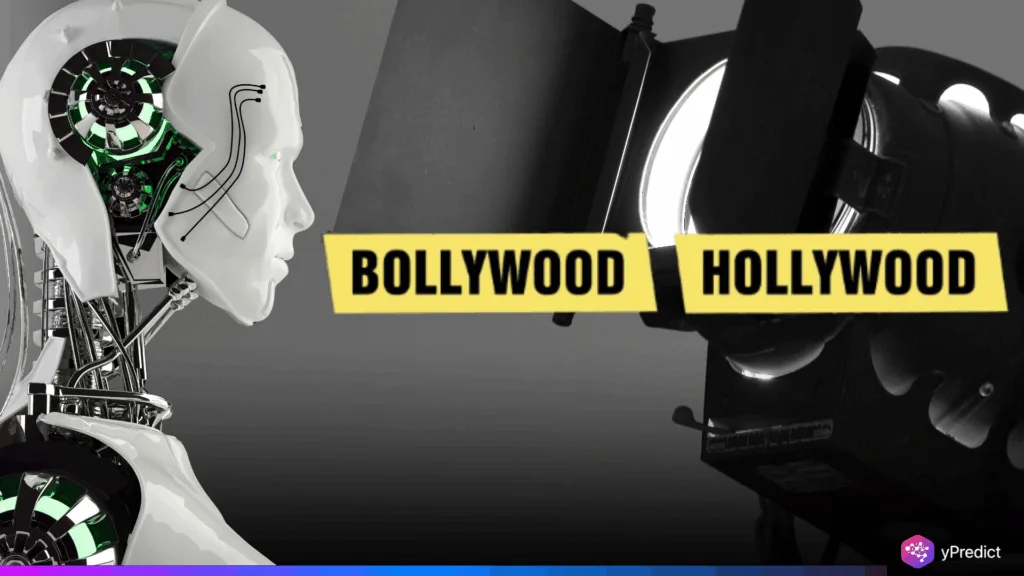
Harshit Yadav, CEO of Zingroll, has stirred debate with a bold claim: AI trailers on his platform have outperformed both Hollywood and Bollywood releases in viral reach over the last month. The statement, shared via IndianTechGuide, signals how quickly AI trailer technology is reshaping entertainment. Yadav even predicts that by 2026, the world will see the first fully AI-made mainstream film. With just over a year to go, the projection feels less like distant speculation and more like an imminent turning point. It raises big questions about how cinema is changing, and who will drive it forward.
AI Trailers Disrupt the Film Industry
AI trailers are fast becoming a serious competitor to conventional cinema promotion and marketing. Platforms like Zingroll and Invideo AI automate the trailer making process by thoughtfully combining stock video, stock music, and text into a 1-2 minute clip that looks professional and polished! The speed and accessibility to make AI trailers means that there are no excuses for smaller studios or independent creators, to create an AI trailer in hours instead of weeks! Yadav even mentions that they are getting more attention than the big-budget Hollywood and Bollywood campaigns that once had tens of millions of marketing budget!
The appeal lies in scale and efficiency. A studio can test multiple AI trailers at once to see which resonates, something impractical with human editing teams. The viral success of fake movie trailers online shows the pull of AI-generated content. People share them for their creativity, irony, or novelty factor, giving them a wide reach across social media platforms.
Cost is another factor. Studies show AI can cut film production budgets by 5% to 20%. For trailers, that impact is even sharper, since AI tools eliminate the need for large editing crews. Instead of a multi-week editing process, one person can guide the AI trailer output, refine it, and publish instantly. This is the edge Zingroll appears to be exploiting successfully.
The Promise and Limitations of AI Trailers
AI trailers are powerful, yet controversial. Many creators contend that it’s true AI can save time and costs while increasing productivity, but it will never replace human creativity. Reasoning that emotional storytelling relies on nuance, many audience members can discern when a machine is involved vs. when a human is involved. It is no wonder that in surveys, the majority of filmmakers identify AI trailers as tools not replacements. AI trailers can help us work faster, but tend to struggle when it comes to emotional arcs or the nuance of pacing that he human editor would’ve provided.
Ethical issues also surround AI trailers. If AI takes over marketing, what happens to editors, sound designers, or trailer houses that have built careers in the industry? Job security is a real concern. There’s also the question of originality, AI often builds on existing media, which opens debates about copyright and ownership. AI trailers could flood the market with formula-driven content, diluting creativity instead of elevating it.
Still, there’s optimism for hybrid use. Many see AI trailers as assistants rather than competitors. They can suggest visuals, cuts, or soundtracks while humans keep control over tone and emotional weight. Zingroll’s rise suggests this middle ground works, leveraging AI trailer efficiency while still injecting a unique voice. The real change may be in collaboration, not in outright replacement.
Conclusion
The rise of AI trailers marks a turning point in cinema. Platforms like Zingroll show how technology can disrupt traditional giants by producing viral content at lower costs and faster speeds. Yet the debate continues: are AI trailers a creative breakthrough or a threat to human artistry? The answer may lie in balance. If studios utilize AI trailers as adjunct initiatives while simultaneously positioning human storytelling at their core, filmmaking could grow without totally compromising its essence. As we approach 2026, the first full AI film may seek to test this balance and contribute to what may be the industry’s future.






